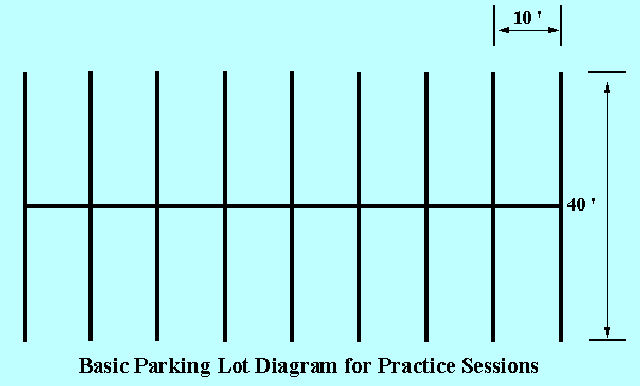
Practice Guide
| Introduction |
| This booklet describes several exercises which can be used for your practice sessions. The exercises will help you develop the skills you need to ride in the various traffic situations. It is suggested that you do not attempt these exercises unless you can already perform basic skills, such as using the clutch and throttle correctly, shifting and riding in a straight line. If you do not have these basic skills, we suggest that you be sure to seek instruction before practicing the skills in this guide. We strongly recommend that you take a Motorcycle Safety Foundation Course. Call 1-800-447-4700 for the MSF Course nearest to you. |
| Choosing a Practice Location |
A well-marked parking lot probably is the best practice area. Be aware of grease left by parked cars. Look for parking lots that are not used all the time. They may be at shopping centers, schools, churches or community centers. For instance, you might use a school parking lot in the evening hours, or a shopping center early in the morning. Once you've selected a suitable location, it is important that you gain permission from the owner. If the parking lot you choose doesn't have lines, use the dimensions of the "Basic Layout". You can mark the parking lot with tape or chalk. Traffic will be your greatest concern. Make sure you check to the front, sides and rear, before doing any exercises. Also make sure you watch out for children and animals and be considerate of others in the area. |

| Safety Rules |
The practice exercises should not be
dangerous. However, a few safety rules should be followed:
|
| What to Bring |
| Bring five or more small objects that
you can use as markers. Milk cartons, plastic bottles with a little water or sand. Tennis
balls cut in half, etc., also work. If you use small objects, do not leave them at the
practice area when finished. If you cannot find small objects, bring some chalk to draw
markers on the pavement. Be sure to bring some water to drink. |
| If Riding 2-Up or Pulling a Trailer or Sidecar |
| It is suggested that you first practice solo and/or without the trailer or sidecar. After you have performed the practice drill successfully a few times, then pick up your Co-Rider, trailer or sidecar and do the drill again. |
The Drills
![]()
For more information please contact:
13950
Herring Road, Colorado Springs, CO 80908
(719) 495-1968 voice/fax
Chm@kktv.com
or
Fred
Wilson
Georgia State Director
(770) 476-0335
fredwing@hotmail.com
Last revised [an error occurred while processing this directive] [an error occurred while processing this directive]